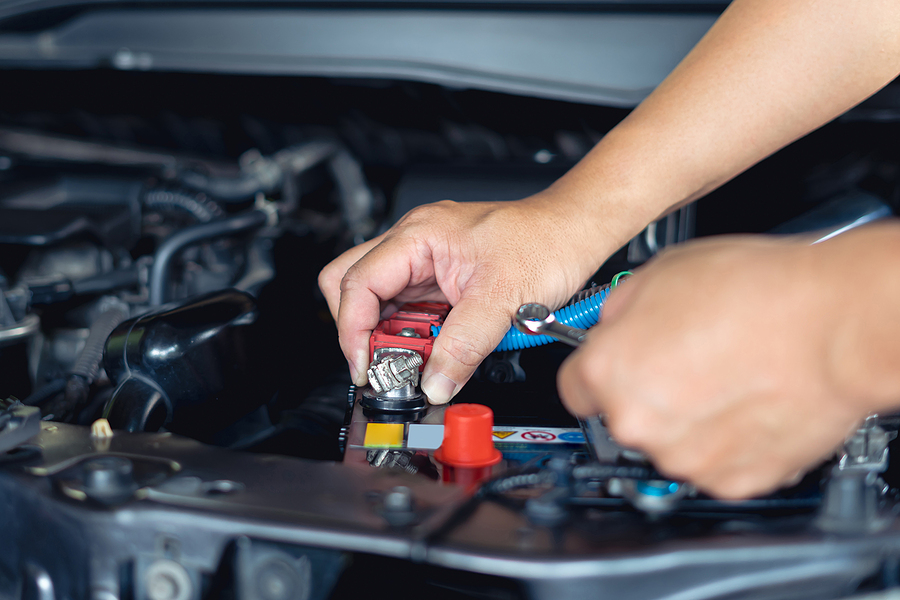Having trouble starting your car can be a sign of a dying battery. But how do you ensure that you choose the perfect replacement? The world of car batteries can be confusing, with numerous brands and specifications to consider.
Whether you’re a seasoned driver or new behind the wheel, this step-by-step guide simplifies the process of choosing the perfect car battery. We delve into the intricacies of car battery replacement and maintenance, ensuring that your next car battery is the ideal match for your vehicle’s needs. Stay tuned, and prepare to arm yourself with the knowledge needed to make an informed decision.

Understanding Car Batteries
Before diving into the selection process, it’s essential to understand the basics of car batteries. These devices store energy and provide an electrical charge to start your vehicle. They also power the headlights, stereo, and other electronic components while the engine is off. Car batteries come in different shapes and sizes, with each serving a specific purpose. The most common type of car battery is the lead-acid battery, which uses a chemical reaction to generate electricity. These batteries have two terminals, a positive and negative, with electrolytes in the middle that help create an electrical charge.
Determining Your Vehicle’s Battery Requirements
The first step in choosing the perfect car battery is determining your vehicle’s battery requirements. This information can typically be found in the car’s manual or on the existing battery. It includes the battery group size, reserve capacity, and cold-cranking amps (CCA). The group size refers to the physical dimensions of the battery, while reserve capacity measures how long it can supply a continuous stream of power. CCA is a measure of how well your battery performs in cold temperatures. Make sure to choose a battery that meets or exceeds these specifications, as a mismatched battery can lead to performance issues and potential damage to your vehicle.
Considering Different Automotive Battery Brands and Types
With so many brands offering car batteries, it’s essential to consider the reputation of the manufacturer. You want a battery from a trusted brand with a proven track record of quality and reliability. It’s also crucial to consider the type of battery you need. While lead-acid batteries are the most common, there are also gel-cell and AGM (absorbed glass mat) batteries available. These types offer benefits such as longer life spans and better performance in extreme temperatures but usually come at a higher cost.
Factoring in Your Driving Habits
Another important aspect to consider is your driving habits. If you use your vehicle for short trips or infrequently, a battery with a high reserve capacity may be a better choice. This allows the battery to maintain its charge even when the engine is off for extended periods. On the other hand, if you have a longer commute or frequently drive in extreme temperatures, a battery with a higher CCA would be more suitable. It’s crucial to choose a battery that aligns with your driving habits to ensure optimal performance and longevity.
Maintaining Your Car Battery
Proper maintenance is key to prolonging the life of your car battery. Regularly check the battery for any signs of corrosion or buildup on the terminals, which can hinder its performance. Clean them with a mixture of baking soda and water if necessary. It’s also essential to keep your battery charged, especially during periods of inactivity. Consider investing in a trickle charger or driving your vehicle regularly to prevent the battery from draining completely.
Final Thoughts
Choosing the perfect car battery can seem overwhelming, but armed with this step-by-step guide, you can make an informed decision that meets your vehicle’s specific requirements. Remember to determine your vehicle’s battery needs, consider different brands and types, factor in your driving habits, and properly maintain your battery for optimal performance. By following these steps, you can ensure that your car always starts smoothly and reliably.
Are you looking for a dependable automotive mechanic for help with your battery or alternator issues? Contact Northeast Auto Service at 317-475-1846 for professional automotive service and repair in Indianapolis, Indiana for alternators and car batteries. Request a free estimate, or schedule service, today.
Related Posts:
Common Causes for Parasitic Draw in Automotive Batteries
6 Signs That Suggest You Need Alternator Repair
How to Diagnose and Solve Common Auto Electrical Problems
